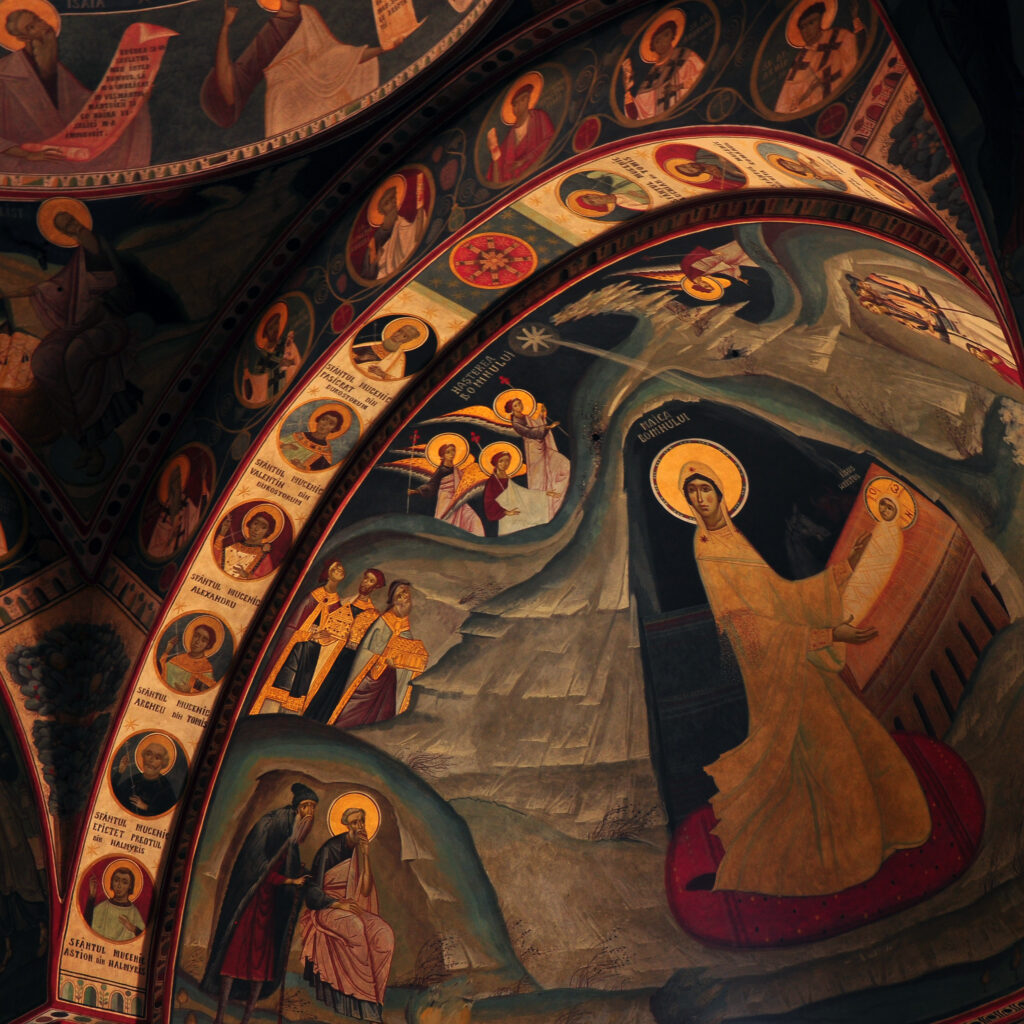Fr. Alexander Laschuk, PhD is a priest of the Ukrainian Catholic Eparchy of Toronto. He is currently the Executive Director of the Metropolitan Andrey Sheptytsky Institute in the Faculty of Theology, in addition to his responsibility as Judicial Vicar of the Toronto Regional Tribunal. He lives in Trinity-Bellwoods with his wife and daughter.
Here, but not yet

It’s Christmas time in the city. The lights are shining, and the markets are re-opening after a long COVID absence. Already last week my daughter and I went for a walk through the financial district to admire all the decorated Christmas trees. However, I look on the calendar and see we have a long way to go yet.
This is life on the Julian Calendar. You may or may not know, but in 1582 Pope Gregory XIII changed the Christian calendar so that Thursday October 4, 1582 was followed by Friday October 15, 1582. This changed happened because the solar year on our planet is not 365.25 days but 365.2425 days. This change led to what we today call the Gregorian Calendar. Countries adopted these changes at different times: most of Catholic Europe in 1582, the British Empire in 1752, Russia in 1918, and Greece in 1923. That means in 1917, when you crossed the border from Austria-Hungary to the Russian Empire, you not only changed your watch, but your calendar! Still today many Eastern Christians continue to follow the calendar of Julius Caesar, just like the early Christians did in the Roman Empire.
Today the Julian calendar is 13 days apart from the Gregorian Calendar—which means that while I am writing this in early December in Toronto ecclesiastically I’m still in the month of November. And my daughter does not understand why she does not get to celebrate Christmas with her “English” friends at school. I’m stricter than my parents were—we’d have the tree up on December 25 at home—and there are no chocolate Advent calendars in this house. After all, the Byzantine pre-Christmas season is a time of fasting. My daughter usually at least gets a Christmas-break vacation out of the deal, but the seemingly ever-present fear of a new COVID variant led to our cancelling a Christmas trip to Italy. “You know, Jesus Christ lived under the Julian Calendar,” I remind her as she rolls her eyes with all the angst common to a seven-going-on-seventeen-year-old.
But in all honesty, I like the Julian Calendar. Not for fundamentalist reasons like some Orthodox Christians but simply because it easily makes sacred time sacred. My sister, a nurse in the E.R., never has a problem getting Christmas Eve off—and makes a pretty penny working overtime on December 25. I get two weeks of peace and quiet to prepare for Christmas once the world has forgotten about it on December 26. And there is certainly no need to worry about “Keeping Christ in Christmas” when you celebrate in January. But to get there, we must get through this early period of bombardment, of realizing that Christmas time is here, but not yet.
In classical Greek we have two words for time—the chronos and the kairos. We can look at Christmas in the sense of the chronos: chronological or sequential time. We’ve arrived at December 25. But for us on the Julian Calendar, I see Christmas as being the kairos: the right moment, the fitting and opportune time. When things have arrived the way they should, like when we talk about “the harvest” as a time period.
And the kairos is almost here.
Read other InsightOut posts.

